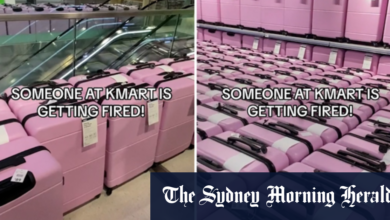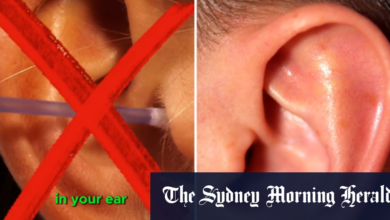Here’s where architectural homes built on water exist

While we seek to tackle the climate crisis, there are realities of our changing climate that we already need to live with. Sea levels have been rising at an accelerating pace, with U.S. coastlines estimated to see a rise of 10 to 12 inches by 2050.
The UN Secretary-General has warned that entire communities and countries could disappear in the coming decades as a result; the danger is especially acute for the 900 million or so people living in low-lying coastal zones.
Many of these vulnerable communities have already experienced devastating flooding. But instead of building seawalls to try and keep water out, or elevating homes on stilts, some architects are designing a future in which we live with water — and on it.
Proposals for entire “climate-resilient” floating cities (including an ambitious ocean settlement in South Korea and one large enough to house 20,000 people in the Maldives) have grabbed headlines. But existing projects, from Lagos to Rotterdam, are showing how life on water might look — and in ways that could be scaled up.
A new exhibition at the Dutch city’s Nieuwe Instituut, “Water Cities Rotterdam,” features the work of NLÉ, an architecture practice led by Kunlé Adeyemi that has been researching and testing floating architecture around the world.
A series of floating pavilions, which evolved from the Amsterdam- and Lagos-based practice’s critically acclaimed Makoko Floating School project, sit in the museum’s ponds.

Makoko is a central district of Lagos, Nigeria, where thousands of people live in informal wooden structures built on stilts in the lagoon. Inspired by the settlement, Adeyemi built a school for its residents in 2012.
Over video call, the architect reflected on a huge flood that hit Lagos in 2011: “Entire streets were covered in water, and I realized that cities are going to flood, but the people of Makoko were already adapting. It was like an epiphany.”
The triangular A-frame wooden school was accessible by boat, and included sheltered classrooms and a communal play space for dozens of children. Rather than standing on stilts, the structure floated on a base of plastic barrels.
(The school collapsed a few years later, although NLÉ clarified it was always intended to be temporary, while claiming that a lack of maintenance and collective management led to its deterioration.)
Learning from this project and from ongoing research — much of which features in his new book, “African Water Cities” — Adeyemi’s practice went on to develop the Makoko Floating System (MFS), a group of sustainable timber structures that can be quickly assembled and disassembled where and when needed.
The system is modular, with more efficient steel connections, and is highly engineered to meet European building codes.

The MFS comprises prefabricated, flat-pack parts that can be constructed by a team of five people in two weeks, without heavy equipment or cranes. “Our aim is to create an inclusive solution that leaves no one behind in this phase of climate adaptation,” Adeyemi said, “and to make sure, as the world evolves, we are able to bring along the most vulnerable communities.”
The system offers small, medium and large versions of the triangular A-frame structure. Adeyemi believes the MFS can be used for a variety of purposes, from housing to education, and is “a solution that can be applied globally.”
He has constructed the system in various countries — including Italy, Belgium and China — in order to test it in different climatic and water conditions.In 2021, the concept took semi-permanent root in Mindelo, a port city in Cape Verde off the coast of West Africa, in the form of a floating “music hub.”
Spread across three triangular wood and steel pavilions, the cultural center includes a performance space, bar, canteen and recording studio floating in the sea and connected to the shore via a walkway.
Learning to live with water
That an iteration of Adeyemi’s MFS is now on show in Rotterdam is perhaps fitting: Rotterdam is the city in the Netherlands most vulnerable to rising waters. With 90% of the city lying below sea level, the sight of floating architecture is nothing new. Examples from numerous design firms grappling with a watery future can be found throughout the city.
One project that completed this year, dubbed Nassauhaven, features 17 floating homes created by local firm Public Domain Architects (PDA). The design won a competition held by the city government to develop a floating architecture pilot project that could help ensure Rotterdam’s future.
“We are a delta city and water levels are changing,” said PDA’s CEO Pieter Figdor over video call. He notes that interest in floating buildings is growing — in the last few years, a floating office complex and a floating farm have also opened in city.
Nassauhaven was promoted as the city’s first floating residential area. With its homes arranged in a neat row, the project is referred to as a “floating street.” The wooden homes sit on concrete pontoons attached by poles to the harbour floor — and by walkways to the land. They rise and fall gently with the daily tides, while remaining stable and comfortable for inhabitants. The buildings have been designed to be energy neutral, with sustainability features such as solar panels, biomass heating and onsite wastewater purification.

Figdor sees building on water as one of the few options left when it comes to new housing in Rotterdam. He also believes it is more resilient than simply constructing barriers to keep water away from buildings on land. “On the water, you are in the safest place for climate adaptation,” he said.
PDA is working on more floating projects, in Bangladesh as well as others in Rotterdam. The firm also hopes to expand the Nassauhaven pilot: “Now we would like to make a little floating quarter of 100 homes or so,” Figdor said.
Adeyemi has similar plans for a MFS neighbourhood in Amsterdam, which is already home to communities of floating houses, with his firm working to expand its system of floating structures to include multi-story “water-scrapers”.
Adeyemi believes that, as yet, there has not been enough research into how we might build and live on water, which makes up 70% of the Earth’s surface. The work on show at the Nieuwe Instituut, and in the architect’s new book, aims to start filling this gap in light of rising sea levels.
“In the near future, human civilization will live more on water,” he said. “Why fight water when you can learn to live with it?”




